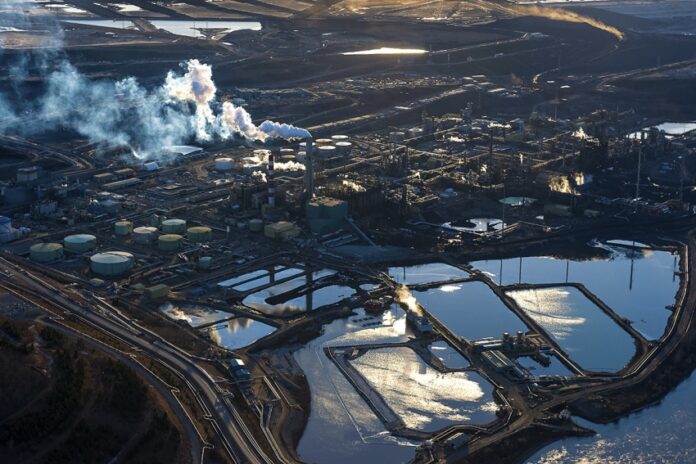When it comes to carbon emissions, the oil sands operations in Western Canada are super polluters. It isn’t just the greenhouse gas emissions released into the atmosphere but also volatile organic compounds in unprecedented volume.
A January 25, 2024, research paper produced by Yale University and Environment Canada scientists, measured atmospheric pollutants in overflights of oil sands operations. This type of airborne study had never been done before. The results collected measured organic carbon emissions that previously were thought only to be found at ground operations and in tailing ponds.
The organic carbon emissions were found to be 20 to 64 times greater than any previous Alberta and Canadian government report. The technology used included in-aircraft gas chromatographs and mass spectrometers. What was found high in the troposphere over oil sands sites, in addition to methane (CH4), carbon dioxide (CO2), and fine particulate matter, included:
- Polycyclic aromatic hydrocarbons (PAHs) are known carcinogens that can be easily transported over long distances through the atmosphere, can contaminate soil and water, and accumulate in the food chain.
- Single-ring aromatics like benzene, pyridine and furan cause respiratory and reproductive problems. BTEX, the most toxic benzene compound is directly linked to leukemia and other cancers. These compounds contribute to smog and acid rain, contaminating both soil and water.
- Cycloalkane, a cyclic hydrocarbon found in solvents, petroleum, natural gas and coal, contributes to skin and eye irritation, respiratory problems, headaches, and dizziness, and has been linked to leukemia and other blood cancers.
- Straight-chain and branched alkanes, also known to cause similar health issues to cycloalkanes, have even caused death with significant exposure.
The magnitude of the total carbon emissions from oil sands facilities far exceeded industry reports. Before these overflight studies, measuring organic carbon emissions focused on surface extraction and bitumen production.
And where industry reports on oil sand pollution showed releases of approximately 68 million tons of CO2 annually, over 10% of all Canadian emissions, the new data suggests the number is closer to 100 million tons.
Measuring was done in 30 overflights conducted over the spring and summer of 2018. The three largest sources were Syncrude, Suncor Energy, and Canadian Natural Resources Ltd. operations producing from 200 to 500,000 tons of organic carbon chemicals annually. What surprised the researchers was that dry tailings emitted more than the tailing ponds, a noticeable feature of the oil sands region in Northern Alberta.
John Liggio, an atmospheric scientist with Environment Canada, who worked with the Yale research team, told the Canadian Press, “All of these different hydrocarbons in the atmosphere react…They form things that are of concern.” Liggio added, “It’s difficult to know what the impact is right now. There are thousands of chemicals. Some of them are cumulative. I don’t know which ones that would be.” He added there is a need for more of these airborne studies.









